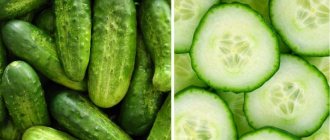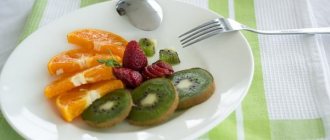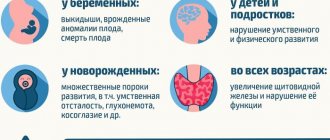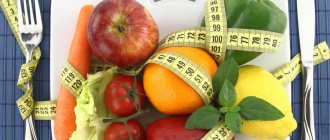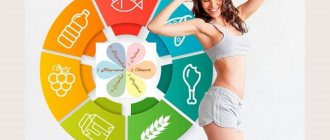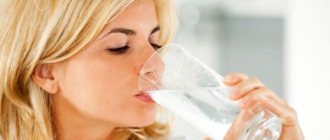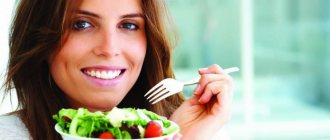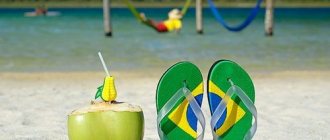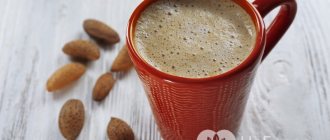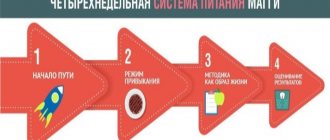Presidential diet: menu for every day My friend and I decided that we would not save on ourselves and, in order to bring ourselves back to normal before the vacation, we chose a way of eating that cannot harm one hundred percent.
Thinking logically, we decided that the presidential diet would clearly be balanced and compiled by the best nutritionists. The menu for each day was found on the Internet. Pleasure is certainly not cheap. However, we purchased all the products that were on the list.
The effect became visible after about a week. I didn’t feel like eating at all, but the requirement to eat 5-6 times during the day was observed in good faith. We lost an average of 7-8 kg in 3 weeks. After switching to a regular table, the weight remained normal.
Presidential Diet, Phase 1. General Rules
Today, one of the most delicious, healthy, and most importantly effective diets is considered to be the unique development of the American cardiologist Arthur Agatston.
Most often, this diet can be found under another name - the “South Beach Diet”. But after the Clinton family became its fans, a second name was strictly assigned to the diet - Presidential. The diet has proven itself not only as an excellent means of losing excess weight, but also as a prevention of atherosclerotic vascular lesions and heart disease. You can evaluate its effectiveness by looking at Hillary and Bill, who have become prettier recently.
It is important to note that the presidential diet is for life. However, following a diet will not make your life tasteless and bland. The diet is very varied; you only need to avoid sugars and some types of fats. For a smooth transition to the new menu, the diet requires two weeks of preparation - this is phase 1 of the presidential diet, which guarantees getting rid of 3-6 kilograms of fat. of metabolism occurs , the body weanes itself from the constant supply of sugar, and addiction goes away.
It is very difficult to adapt the presidential diet to the Russian market due to restrictions on products, but it is possible. For example, purchasing low-fat varieties of cheese in the West is not difficult, but in Russia they have to be replaced with low-fat cottage cheese.
In the first phase, you only need to give up sweets and all sugar-containing products (ice cream, cakes). It is necessary to carefully study the composition of products in stores and exclude everything that contains code names for sugars:
- glucose syrup;
- dextrose;
- sucrose;
- glucose;
- fructose.
The first phase prohibits the consumption of any alcohol-containing drinks (even weak and bitter ones). All cereals, potatoes, flour, bread and pasta are prohibited. You should not eat starch-containing ready-made meals. Fatty foods are taboo.
After the first phase, you can return to many of the above foods, but the first two weeks of the presidential diet require a complete abandonment of them. You may not even notice these strict restrictions, because... six meals a day are provided from a variety of products.
General information about the Presidential Diet
American cardiologist Arthur Agatson in the 90s developed a nutrition program that became known as the South Beach diet.
This diet has become very popular. Many were happy to choose a diet of foods rich in substances beneficial to the body. After a while, when the Clinton family became seriously interested in it, the diet became known as the presidential diet. Many adherents of this diet claim that with minimal effort you can lose up to 6 kilograms in a couple of weeks. The essence of the presidential diet is to limit carbohydrate foods and consume protein. Having felt a lack of carbohydrates, the body begins to obtain them from fat deposits. The nutrition system helps keep your weight in the desired range. At the same time, all systems of the human body function normally. The Presidential Diet is a complete diet that helps prevent atherosclerotic vascular lesions. The menu is designed to reduce the stress on the cardiovascular system of an overweight person.
Dr. Agatston recommends not reducing the amount of food consumed, but only paying attention to the quality of food. The dietary system leads to gradual weight loss. In the first two weeks, it takes from 3 to 6 kg. This may be due to the maximum consumption of foods that are healthy for humans and the minimization of easily digestible carbohydrates. The basis is seafood, it is recommended to include shrimp, squid, seaweed, fish: pike perch, salmon, flounder. If the result obtained is not satisfactory, you can continue the established diet.
Varieties
The first phase lasts 2 weeks, and can be extended for another week if necessary. During this period you need to eat with the same frequency as before, however, you can add different goodies (fruits, cereals, bread, good wine, etc.). New products should be introduced gradually.
In the second phase, you can eat porridge, but not everything in a row. It is better to give preference to rolled oats and buckwheat porridge, and it is strongly recommended to avoid instant porridges.
Semolina porridge is prohibited, and potatoes and rice can only be consumed as an exception. A serving of any product should not exceed 150 grams in ready-made form.
A similar approach applies to bread products. Coarse and whole grain varieties are allowed, but products made from regular flour and premium flour are prohibited. Starch and sugar are prohibited; it is recommended to limit salt intake.
The menu should include fruits and berries every day, despite their high fructose content. It is recommended to dilute juices with water. It is better to limit the water regime to drinking plain water and tea. Among teas, it is better to give preference to green tea, and always without added sugar. On holidays you can drink a small amount of natural dry wine. Bitter beer is prohibited due to its high sugar content.
The third stage is a kind of nutrition program for life. Thanks to the new menu, you can maintain your weight and protect your heart and blood vessels. Meals become four times a day and contain virtually no prohibited foods. At this stage, after passing through the first and second phases, sugar loses its taste value for you, which eliminates cravings for sweets.
Among baked goods, preference is best given to products made from wholemeal flour with the addition of cereals and bran. Meals should still be low in animal fats. It is not recommended to eat ready-made meals or semi-finished products (sausages, dumplings, etc.). Salt can be added to dishes, but in moderation. You need to drink as much water as your body requires. Sugar is still banned, but sweeteners are allowed.
Second phase
The task of the second phase is to consolidate the obtained result. The duration of this stage is a couple of weeks. Semolina and starch-containing products are still prohibited; dry wine is allowed for alcohol, but beer is not allowed. Gradually you need to introduce:
- rolled oats, brown rice, buckwheat;
- low-fat dairy products;
- berries and fruits (except bananas, watermelon);
- some potatoes;
- whole grain bread no more than 150 g;
- durum wheat pasta.
In the second phase of nutrition, it is recommended to limit salt, maintain a water regime (plain water, green tea), and avoid hunger. An approximate daily diet is as follows:
- breakfast - porridge from permitted cereals with fruits, dried fruits, toast, egg, tea;
- lunch – 100 g of berries, 1 fruit, a glass of kefir or 100 g of cottage cheese;
- lunch – soup with meat, 1 glass of natural juice, vegetables in any form;
- afternoon snack – yogurt with cereals;
- dinner - boiled salmon or any seafood, garnish - vegetables, pasta;
- 2nd dinner – any citrus fruits.
Third phase
The main goal of the third phase is to comply with the healthy eating rules of the first two stages. The important thing is that by this time sugar has lost its importance, due to which the dependence on sweets is minimal. Meals go into four meals a day, there are practically no prohibited foods. Bread products are selected from wholemeal flour; you should not overuse semi-finished products; dishes are still prepared with a minimum amount of fat. It is recommended to exclude sweet products and baked goods.
Indications
This nutrition system allows you to keep your weight in a comfortable range for you. All organs and systems will function at the proper level: thinking will be clear, blood vessels will be clean and free of cholesterol plaques , the heart will be rhythmic, the liver and pancreas will be free of slagging and congestion.
This effect is achieved through minimal consumption of easily digestible carbohydrates and harmful fats, as well as through the consumption of foods that are healthy for the body. Fish enriches the body with omega-3-saturated acids; berries, fruits and vegetables - antioxidants , vitamins , minerals and beneficial microelements.
Authorized Products
You can eat lean meats, turkey, chicken breast, and fish. You can boil or steam the meat, but just don’t fry it. It is allowed to eat low-fat cheeses, eggs, nuts and cottage cheese.
Greens and vegetables are unlimited in quantity. Salads can be seasoned not only with olive oil, but also with sunflower oil. All dairy products must be strictly low-fat. You need to prepare the dishes yourself; public catering is unlikely to take care of your health.
Table of permitted products
| Proteins, g | Fats, g | Carbohydrates, g | Calories, kcal | |
| vegetables | 2,5 | 0,3 | 7,0 | 35 |
| horseradish | 3,2 | 0,4 | 10,5 | 56 |
| nuts | 15,0 | 40,0 | 20,0 | 500 |
| feta cheese (made from cow's milk) | 17,9 | 20,1 | 0,0 | 260 |
| mozzarella cheese | 18,0 | 24,0 | 0,0 | 240 |
| parmesan cheese | 33,0 | 28,0 | 0,0 | 392 |
| ricotta cheese | 11,0 | 13,0 | 3,0 | 174 |
| cheddar cheese | 23,0 | 32,0 | 0,0 | 392 |
| curd tofu | 8,1 | 4,2 | 0,6 | 73 |
| pork | 16,0 | 21,6 | 0,0 | 259 |
| beef | 18,9 | 19,4 | 0,0 | 187 |
| chicken thigh | 17,3 | 15,3 | 0,0 | 211 |
| chicken fillet | 23,1 | 1,2 | 0,0 | 110 |
| chicken eggs | 12,7 | 10,9 | 0,7 | 157 |
| fish | 18,5 | 4,9 | 0,0 | 136 |
| olive oil | 0,0 | 99,8 | 0,0 | 898 |
| cocoa powder | 24,2 | 17,5 | 31,9 | 374 |
| lemon juice | 0,9 | 0,1 | 3,0 | 16 |
| * data is per 100 g of product | ||||
Heart failure - nutrition and diet
On average, you are allowed to consume no more than 6 g of salt per day. During periods of exacerbation of the disease, the amount decreases. It is even recommended to exclude foods that contain a lot of salt from your diet, and not to add salt to your food. With severe symptoms of heart failure, cardiologists prohibit patients from consuming salt at all.
The second limitation concerns liquid. It should also be kept to a minimum, as severe swelling occurs. The average daily fluid intake is usually 1.2-1.5 liters, including soups and other liquid dishes. But it is important that there is at least 0.8 liters of fluid, otherwise dehydration may occur.
In addition to the restrictions, there are a number of products that, on the contrary, are recommended for consumption. For the most part, these are potassium-containing foods: bananas, dried apricots, nuts, raisins, Brussels sprouts, baked potatoes, peaches, oatmeal and buckwheat porridge, veal, etc. It is especially important to adhere to a potassium-containing diet during an exacerbation of the disease and when taking diuretics, as well as cardiac glycosides.
Lifestyle and nutrition are extremely important in heart failure. If the disease is at an early stage, sometimes it is enough to change these two parameters to take the load off the heart, eliminate swelling and get rid of shortness of breath.
Drug treatment of heart failure
Diet and proper lifestyle can be used as therapy only for mild forms of heart failure. In other cases, you cannot do without medication. The cardiologist individually selects medications and dosage for each patient. This is a very important point, since the severity of the disease, the weight and age of the patient, and concomitant diseases are taken into account. You cannot take pills “for the heart”, which Elizaveta Grigorievna or Timofey Stepanovich take. You must strictly follow the instructions of your doctor.
Properly selected therapy will help minimize the load on the heart, relieve swelling, remove excess fluid, and improve heart function associated with pumping blood. In some cases, medications are additionally prescribed that prevent the formation of blood clots.
When the acute condition of heart failure has been eliminated, the patient is transferred to mandatory maintenance therapy. The removal or addition of drugs is carried out exclusively by the doctor, analyzing the current condition of the patient. To prevent relapses, it is important to be examined by a cardiologist every three months, adhere to a diet and lead a healthy lifestyle.
Fully or partially limited products
All sweets (sweets, ice cream, cakes, etc.) and all sugar-containing products are prohibited.
It is worth paying attention to the composition of industrial products, focusing on hidden sugars (fructose, dextrose, sucrose, glucose syrup). For two weeks you should not eat berries, fruits and juices from them due to their high fructose content.
It is necessary to exclude all alcohol-containing drinks and products made from potatoes, flour, and cereals (including pasta and bakery products). Fatty foods are prohibited.
Table of prohibited products
| Proteins, g | Fats, g | Carbohydrates, g | Calories, kcal | |
| potato | 2,0 | 0,4 | 18,1 | 80 |
| corn | 3,5 | 2,8 | 15,6 | 101 |
| carrot | 1,3 | 0,1 | 6,9 | 32 |
| fruits | 0,8 | 0,3 | 11,5 | 56 |
| buckwheat | 4,5 | 2,3 | 25,0 | 132 |
| semolina | 10,3 | 1,0 | 73,3 | 328 |
| oat groats | 12,3 | 6,1 | 59,5 | 342 |
| corn grits | 8,3 | 1,2 | 75,0 | 337 |
| pearl barley | 9,3 | 1,1 | 73,7 | 320 |
| Wheat groats | 11,5 | 1,3 | 62,0 | 316 |
| millet cereal | 11,5 | 3,3 | 69,3 | 348 |
| barley groats | 10,0 | 1,3 | 71,7 | 324 |
| barley grits | 10,4 | 1,3 | 66,3 | 324 |
| pasta | 10,4 | 1,1 | 69,7 | 337 |
| chocolate candies | 4,0 | 39,5 | 54,2 | 569 |
| chocolate covered fruits | 0,8 | 15,6 | 11,0 | 179 |
| yoghurt cake with cranberries | 2,5 | 10,1 | 35,4 | 240 |
| yogurt | 4,3 | 2,0 | 6,2 | 60 |
| * data is per 100 g of product | ||||
Presidential diet for weight loss: the essence of the technique, features
A key feature of Dr. Agatston’s presidential diet is a significant restriction on carbohydrates in the menu, but proteins are given the main preference. When the body notices a lack of calories - this happens on days 2-3 - it independently begins to extract them, destroying fat cells.
Advantages and disadvantages
The advantages of the presidential diet are as follows:
- While following it, you don’t have to starve: it’s enough to follow the rules for weight loss;
- Due to the division into phases, it is possible to lose kilos without harm to health;
- Since only healthy foods are allowed on the menu, you can thoroughly cleanse your body of harmful substances in a few weeks.
The program is not recommended for people with diseases of the cardiovascular system, renal failure and pregnancy.
How much can you lose without harming your health?
The greatest amount of weight is gained in the first two weeks – up to 7 kg. Further, this figure decreases to 4 kg in 7 days, because the calorie content of the presidential diet is not considered too low - about 1300 Kcal per day can be consumed by those who are on it.
Speaking about the effectiveness of the technique, it should be borne in mind that it is not quick, but it certainly does not harm health if there are no contraindications.
What is prohibited from eating during the first phase:
- Sweets, flour and semi-finished products;
- Berries, cereals and fruits;
- Fatty types of meat, cheese, cottage cheese and kefir;
- Corn, carrots, potatoes.
This period is a preparatory period, and if a specific product is not on the list of prohibited foods, then it can be eaten.
The following products should be included in the second phase:
- Milk, kefir, cottage cheese;
- Buckwheat, rolled oats and brown rice;
- Potatoes in limited quantities;
- Fruits and berries;
- Coarse bread.
In the third phase, you are allowed to eat all foods except fatty, sweet and smoked ones.
To contents
Menu (Meal Schedule)
Sample menu for the week
Monday
| Breakfast |
|
| Lunch |
|
| Dinner |
|
| Afternoon snack |
|
| Dinner |
|
| Second dinner |
|
Tuesday
| Breakfast |
|
| Lunch |
|
| Dinner |
|
| Afternoon snack |
|
| Dinner |
|
| Second dinner |
|
Wednesday
| Breakfast |
|
| Lunch |
|
| Dinner |
|
| Afternoon snack |
|
| Dinner |
|
| Second dinner |
|
Thursday
| Breakfast |
|
| Lunch |
|
| Dinner |
|
| Afternoon snack |
|
| Dinner |
|
| Second dinner |
|
Friday
| Breakfast |
|
| Lunch |
|
| Dinner |
|
| Afternoon snack |
|
| Dinner |
|
| Second dinner |
|
Saturday
| Breakfast |
|
| Lunch |
|
| Dinner |
|
| Afternoon snack |
|
| Dinner |
|
| Second dinner |
|
Sunday
| Breakfast |
|
| Lunch |
|
| Dinner |
|
| Afternoon snack |
|
| Dinner |
|
| Second dinner |
|
Presidential diet for weight loss at home: phases, menus, rules
Rules for losing weight:
- It is advisable to eat 5 times a day, but not in too large portions;
- An important part is drinking water - you need to drink about 1.5 liters of non-carbonated mineral water per day;
- Sports activities are recommended - this will increase efficiency.
Presidential diet phase 1: menu
To better navigate your diet for two weeks, you can use this sample menu:
- We have breakfast with casserole and tea without sugar;
- For lunch we eat 100 g of cottage cheese;
- We have lunch with lettuce and boiled chicken breast;
- We have an afternoon snack of stewed cabbage with mushrooms;
- We have dinner with seafood salad, 100 g of boiled beans.
Presidential diet phase 2: menu
The duration of this period is from 2 to 5 weeks:
- In the morning we eat oatmeal boiled in water with fruits or berries, a couple of eggs, drink fruit juice or tea;
- We snack on berries, kefir or cottage cheese;
- We have lunch with vegetable puree and soup with meat. We drink fruit juice;
- For an afternoon snack we eat yogurt;
- We have dinner with a vegetable side dish, boiled fish and tea;
- We eat 1 citrus fruit 3 hours before bedtime.
Presidential diet phase 3: menu
This example of a diet can be used throughout your life:
- We have breakfast with any cereal porridge, yogurt and green tea;
- For lunch we eat baked apples;
- We have lunch with meat soup and fresh vegetable salad;
- We have an afternoon snack with grapefruit or kefir;
- We have dinner with vegetable stew and 100 g of meat;
- 1 hour before bedtime we drink kefir.
Recipes for the Presidential Diet
Omelette recipe
- Beat 2 eggs, chop the onion and bell pepper, mix everything;
- Fry, sprinkle with grated cheese at the end.
Chicken Soup Recipe
- Boil the meat;
- Grind the zucchini, bell pepper, garlic, place everything in the broth, add salt;
- Sprinkle with herbs and cook until done.
Baked beef recipe
- Cut the meat into pieces, rub with garlic, sprinkle with pepper and cumin;
- Bake in the oven.
We also recommend that you read the article The Diet of Doctors.
To contents
Recipes
Summer salad of parsley and green onions
Main components:
- a bunch of parsley (2 pcs.);
- green onions (4-5 stalks);
- salt (to taste);
- vegetable oil;
- lemon (1 pc.).
Peel the green onions, sort out the parsley, rinse well, chop finely, add salt to taste and let steep for 10 minutes. Peel and pit the lemon, cut into small pieces and season everything with vegetable oil, thoroughly mixing the resulting salad. Serve with cold boiled fish or meat.
Diet for cardiovascular diseases
Proper nutrition is an important method of treating and preventing cardiovascular diseases and their complications. Maintaining a diet aimed at reducing the amount of fat entering the body is necessary for every cardiac patient as a constant intake of drug therapy recommended by a doctor.
The European Society for the Study of Atherosclerosis recommends that patients adhere to the following recommendations:
| Products | Recommended | Limited admission | Not recommended |
| Fats | Limit all fat intake. | Butter and margarine containing polyunsaturated fatty acids in large quantities; margarines with low cholesterol content. Oil: sunflower, corn, saffron, soybean, olive, cottonseed. | Oil and fat obtained during frying of meat and meat products; lard, coconut oil. Margarines without a high unsaturated fat content label. Melted or vegetable oil of unknown origin. Hydrogenated oils and margarines. |
| Meat | Chicken, turkey, veal, rabbit, game (wild ducks, partridges, hare) | Lean beef, bacon, ham, lean ground beef, liver and kidneys. | Meat with visible fat, lamb brisket and ribs, pork (meat from the abdominal area). Bacon with layers of fat, sausages, sausages, salami, pates, scrambled eggs with meat, duck, goose, meat pastes, poultry skin. |
| Dairy | Skim milk, low-fat cheeses (for example, pressed cottage cheese), skim milk cheese, curdled milk cheese. Low fat kefir. Egg white. | Semi-skimmed milk, medium-fat cheeses (Eden, Camembert). Processed, spreadable cheeses. 1-3 eggs per week. Half-fat cheeses. | Unskimmed milk, condensed and concentrated milk, cream, whipped cream. Fat cheeses: Cheddar, Cheshire, etc. Cream cheeses. Fat kefir. |
| Fish | All “white” fish, cod, hoddog. flounder. Fatty fish: herring, mackerel, sardines, tuna, salmon (chum salmon, pink salmon, salmon) | Fish cooked in suitable oil. Shellfish. Marine crustaceans. | Fish caviar. |
| Fruits vegetables | All fresh and frozen vegetables, peas, beans, olives. Dried legumes: peas, beans, lentils. Boiled potatoes (peeled or in their skins, eating the skin whenever possible). Fresh fruits, unsweetened canned fruits, walnuts, chestnuts. | Fried, stewed potatoes cooked in suitable oil. Fruits in syrup. Candied fruits. Almond. Hazelnut. | Fried, stewed potatoes (if they are cooked in unsuitable oil). Potato chips, crispy potatoes. |
| Cereals | Coarse flour (unsifted), bread made from it/unground (whole) cereals, oatmeal. Wheat flour. Oatmeal. Unpolished rice and rice paste. Rusks cooked in the oven. Oat cookies. Yeast-free bread. | White flour, white bread, sweet cereals for breakfast, polished (white) rice and pasta made from it. An ordinary semi-sweet biscuit. Biscuit made with water. | Cakes. Biscuits with spicy cheese. Confectionery products (cookies, cakes) purchased in a store. |
| Bakery | Low-fat puddings: jelly, sherbet, skim milk puddings, low-fat condiments (purees). | Cakes, confectionery, biscuits and condiments prepared in suitable butter or margarine. Homemade snacks with unsaturated fats. | Cakes, puddings, biscuits with saturated fat. Dumplings, puddings made with fat. Seasonings with cream and butter. All store bought puddings and condiments. Appetizers cooked in “boiling” oil (fried side dishes). Milk ice cream. |
| Beverages | Weak tea, coffee, mineral water, unsweetened drinks, fruit juices without sugar. "Clean" soups. Homemade vegetable soups. Low alcohol beer. | Sweetened drinks, low-malt drinks, low-fat liquid chocolate (rarely). Batch soups, meat soups. Alcohol. | Irish coffee (coffee with cream and alcohol), fat-rich malt drinks, chocolate, creamy soups. |
| Canned food, sweets | “Clean” marinades. Sweets without sugar: saccharin tablets or liquid sweets with aspartame. | Sweet marinades and seasonings (from fruits, peppers), which are served with cold meat. Marmalades. Honey. Syrups. Marzipan. Peanut butter. Lemon curd. Hot sweets. Marshmallows, mints, sugar, sorbitol, glucose, fructose | Chocolate creams, pie filling made from animal fats. Taffy. Sweets. Cream obtained by whipping butter and sugar. Chocolate. |
| Rest | Herbs, spices, mustard, pepper, vinegar. Low fat seasonings; lemon, yogurt. | Meat and fish pastes, low-calorie cream and mayonnaise. Bottled sauces. French seasonings. Soy sauce. | Regular salad cream, mayonnaise, cream or dressings containing cream cheese. |
Explanations for dietary recommendations:
The basis of the diet should be “recommended” foods, which are foods low in fat and/or high in pectin fiber.
The foods listed in the "limited intake" section contain polyunsaturated fats or small amounts of saturated fat; if your diet contains a small amount of fat, then these foods are limited, but their consumption should not exceed 1-2 times a week.
The foods listed in the "not recommended" section contain high amounts of saturated fat and should be avoided as much as possible.
Print Email
Advantages and disadvantages
| pros | Minuses |
|
|
Important Terms
When preparing dishes yourself, it is important to remember all the restrictions and prohibitions: use flour and potatoes as rarely as possible, and also limit carrots and beets due to their high sugar content.
If possible, it is better to avoid noodles and cereals. You cannot add ready-made seasonings or bouillon cubes. First courses should not be too fatty; it will be better if they are vegetarian or fish with the addition of mushrooms, vegetables and herbs.
Soups must be low-fat; to do this, after cooking, place the pan in the refrigerator, and then remove the harmful fats that have frozen on top in the form of a film.
Vladimir Putin's menu. Royal soup
What the President of Russia eats during meetings, trips and within the walls of the Kremlin, as well as how to prepare one of his favorite dishes - royal fish soup - you will learn from the culinary review of our “Kitchen” section.
Despite the fact that Russian President Vladimir Putin hardly talks about his culinary preferences, from snippets of interviews, reports and articles it is quite possible to create an approximate diet for the country’s leader, who maintains himself in excellent physical shape, despite a busy schedule of work, meetings and trips. In one of his interviews, Vladimir Putin answered a journalist’s question about his food preferences:
In general, I eat everything they give me. To be honest, I don’t have much time for food... I love vegetables: tomatoes, cucumbers, lettuce. In the morning - porridge, cottage cheese, honey. If there is a choice between meat and fish, I prefer fish; my favorite meat is lamb. I am generally indifferent to sweets, except for ice cream. I only drink green tea.
Journalists found out that the president often eats rice porridge for breakfast and, in addition to green tea, also drinks herbal tea. He loves buckwheat and millet porridge, but he doesn’t particularly like oatmeal. Cottage cheese with honey, often with fruit or dried fruits, is always on the table at the Kremlin breakfast. Another one of the first chief chefs of the Kremlin, Anatoly Galkin, spoke about this. It is also said that raw quail eggs are served at the morning meal.
Photo: BAO/Globallookpress
According to the president’s former wife Lyudmila, despite his apparent unpretentiousness in food, Vladimir Putin could easily refuse lunch if he didn’t like the dish even a little. At the same time, she notes that she never really praised it if it was delicious, but “just ate it,” satisfying her hunger.
On business trips, the Russian President always tries local dishes and often dines at catering establishments. In 2003, in the village of Risoopytny (Krasnodar Territory), he had lunch with machine operators in the open air. On the table there was Kuban borscht, local lard and tomatoes. During his visit to Kaliningrad, the president was served royal fish soup, pies with red caviar, eel shish kebab and pancakes with strawberries. In 2008, in Tatarstan, Putin had lunch in a canteen. Ordered a seasonal salad, chicken noodle soup, beef and rice and a patty.
In Petrozavodsk, Putin liked the Karelian “wickets” (small pies made from rye dough). It is also known for certain that the president really likes Ossetian pies, Tatar belyashi and chak-chak.
In 2012, on the eve of Defender of the Fatherland Day, Vladimir Putin visited the Taman brigade and had lunch with soldiers in the canteen. The president's choice fell on beef pasta, pie and orange juice. Around the same time, it became widely known that the Russian President prefers wine or beer if he has to drink alcohol, which, as you know, Vladimir Putin does not particularly like.
Photo: Vladimir Anosov/Globallookpress
For Putin’s breakfasts, lunches and dinners in the Kremlin, not only the chefs and culinary experts from the Federal Security Service, but also the special services are responsible, because the president’s security begins with the consumption of food and liquid. All products pass through special radiometric and x-ray equipment. And ready-made meals are delivered only in special sealed thermoses. They say that in the entire history of the “special kitchen”, where they cook for the president, it “flew” only a couple of times. Whether the leader of the country remained hungry or whether the intelligence service had a plan B is not known for sure...
A lot of self-promotion was made on the name and image of the president, who tried this or that dish, went to a restaurant where he had lunch or dinner: “The President dined with us,” “Vladimir Putin’s menu,” and even the “Putin” dish, which caused a lot of noise.
The fact is that in Germany a phonetically similar word is translated as turkey, and in Canada “poutine” is generally a fast food dish: fried french fries covered in melted cheese and sauce, which has existed since the last century. “Putin” is very popular among the French-Canadian population of the country. Holidays and festivals are organized in his honor, and cartoons are made. Moreover, there are several variations of the dish: “poutine” with truffles and “poutine” with foie gras.
As for the dish “Ukha a la Tsar”, as one of Vladimir Putin’s favorites, to some extent this is also a promotional product after his visit to a tavern in Kaliningrad. But, given the obvious preference for fish products over meat, as well as the indisputable fact that the president prefers Russian cuisine to any other, the national fish soup (and this is Ukha a la Tsar) is probably revered by the Russian leader.
Photo: Pirat Pirat/ Shutterstock.com
Royal soup
Ingredients:
First broth: 1.5 kg of small river fish: crucian carp, perch, rudd, silver carp heads, 5 liters of water. For the second broth: 800 g river trout or pike, 2 onions, 2 carrots. For the third broth: 800 g of white fish, sturgeon, sterlet or beluga, 800 g of potatoes, 50 ml of vodka, salt and pepper to taste, 1 bunch of parsley or dill, 50 g of caviar (black or red).
Method
First broth. We gut small fish, remove the gills, and wash them. Place in cheesecloth, add water and cook for 1 hour. (After cooking, throw away the fish.)
Second broth. We also clean the fish, gut it, remove the gills, and wash it. Cut into large pieces, place in clean gauze and add to the first broth. We put onions and carrots in it. Cook for 30 minutes, then remove the onions and carrots and cook the fish for another 30 minutes. We take the fish out of the broth, remove the skin and bones, and mash it into a paste with a fork (to then put it in your fish soup).
Third broth. We gut the fish, cut off the heads, be sure to remove the chord and wash it. Cut into portions (from 3 to 5 cm).
Cut the potatoes into small cubes. Place into the broth with the fish. Salt and pepper. Cook until the potatoes are ready. If suddenly the broth turns out cloudy, then lighten it with egg white beaten with salted water. (We remove the white mass that floats up). Now we add fish from the second broth and pour in vodka.
Cover with a lid and leave for 10 minutes. When serving, season with finely chopped parsley and a spoonful of caviar on top of large pieces of fish.
Bon appetit!
Comments from nutritionists
According to nutritionists, the presidential diet is one of the most effective and useful among all the variety, because it involves a complete change not only in the diet, but also in the lifestyle.
The first phase may seem difficult, because it is during these two weeks that healthy habits are formed: do not eat sweets, do not eat unhealthy fats, fast foods, etc. But the rich variety of permitted products compensates for this limitation, making your body not only fit, but also healthy.
Presidential diet: reviews and results
Don't expect stunning results right away. Everyone knows that with rapid weight loss, the body, after returning to a normal diet, quickly regains the lost kilograms, and sometimes the weight even exceeds the starting mark.
The first phase has a simple task - to teach not to eat things that are harmful to the body. For some it comes easily, but for others it is very difficult to say goodbye to sweets. Many people note that by the end of the first week they feel a surge of strength in the body and lightness after eating.
Stool normalizes, flatulence , sleep and exercise tolerance improves. For the most part, reviews of the presidential diet are positive - it is well tolerated and effective.
